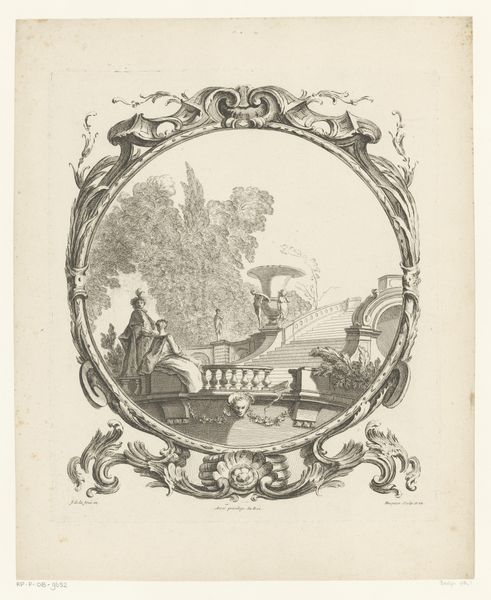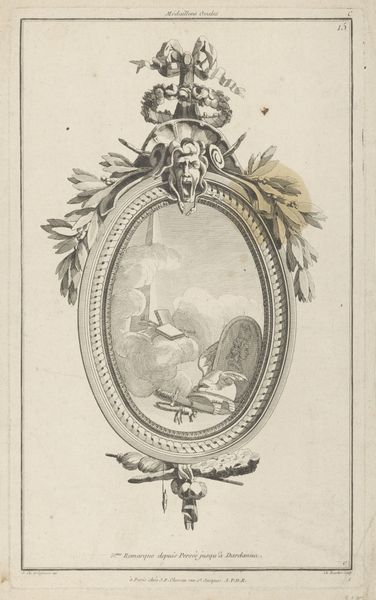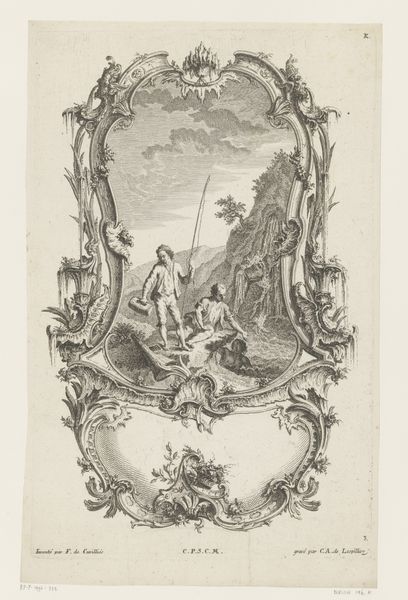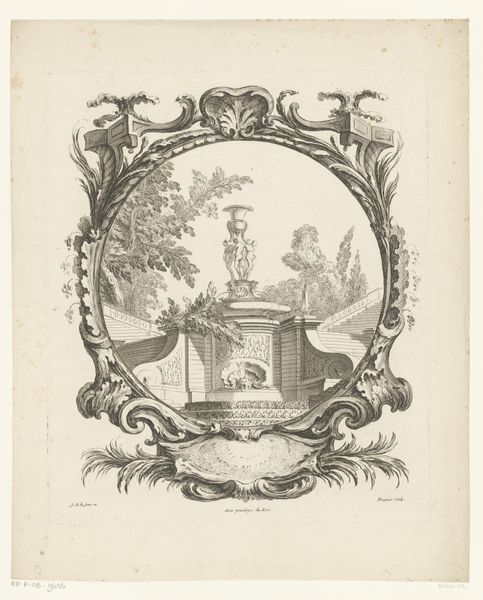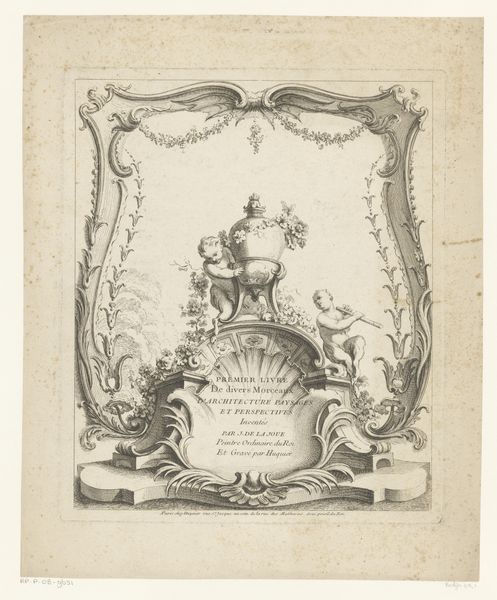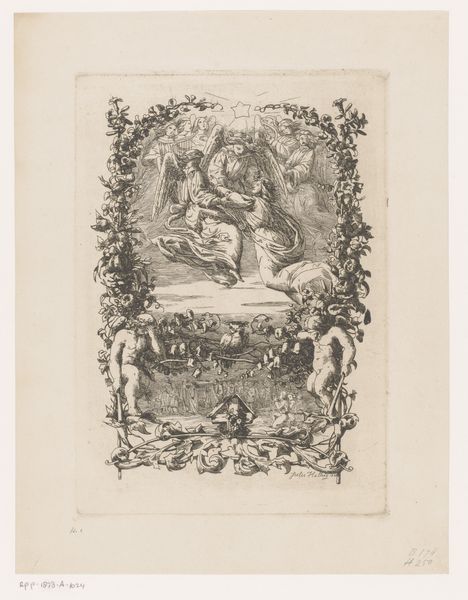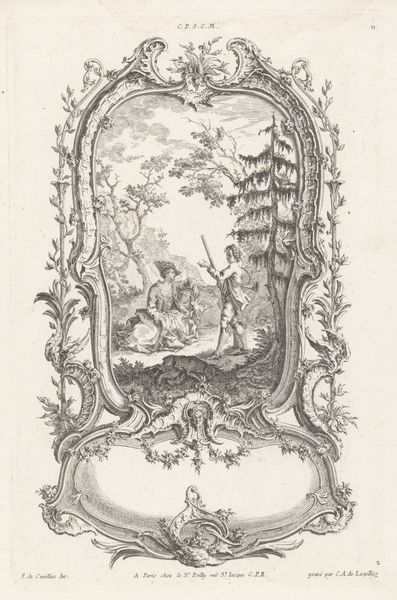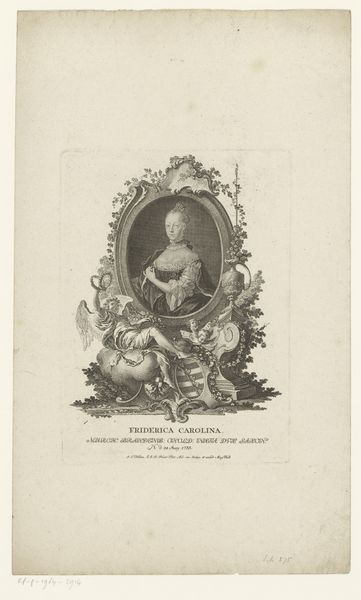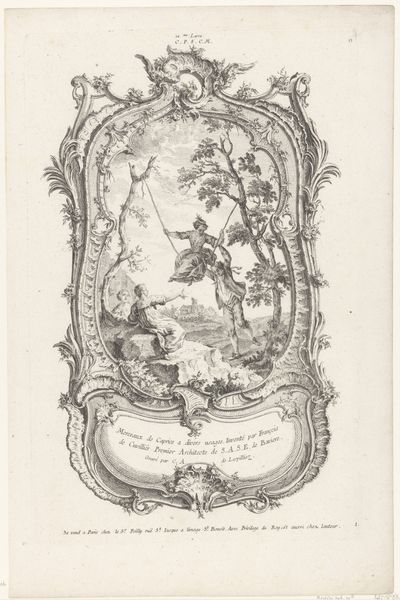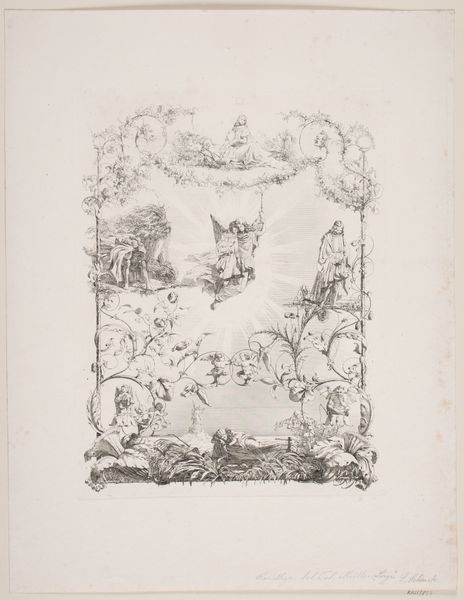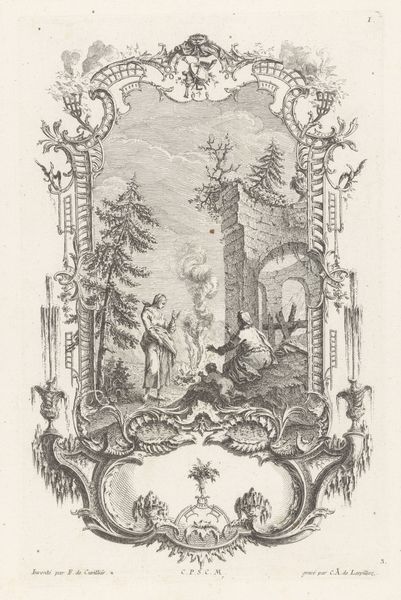
print, engraving
#
baroque
# print
#
landscape
#
history-painting
#
engraving
Dimensions: height 319 mm, width 273 mm
Copyright: Rijks Museum: Open Domain
Curator: Here we have "Garden with Fountain and Term," an engraving produced between 1731 and 1761 by Gabriel Huquier, currently held in the Rijksmuseum collection. My first encounter is with the intricate ornamental border, what about you? Editor: Well, the first thing that strikes me is its serene, almost dreamlike quality, even though it's a static print. The monochrome rendering softens the architectural lines of the fountain, like a whispered secret from a bygone era. Curator: Precisely. It's worth noting Huquier’s role as both artist and, essentially, a kind of proto-manufacturer. Engravings like these weren’t just art; they were reproducible images, circulated for architectural ideas or even aspirational lifestyle design, serving a distinct consumer market of their day. The sharp lines, the gradations achieved through dense cross-hatching– a mastery of reproductive craft! Editor: I'm really drawn to the playful way the light flickers across the water, considering it's just lines on paper. It almost tricks the eye into thinking there's actual movement. And that border - is it meant to be a wreath or some sort of... trophée? It makes me wonder if these motifs could serve as visual signifiers, denoting taste and status? Curator: Exactly. The Baroque era had a love of ornamentation that signaled social position, as evidenced by details like those musical instruments intertwined in the lower frame – visual cues directed to a specific viewership attuned to elite culture and social hierarchy. We must understand prints like these not as autonomous art, but cultural products shaped by, and actively shaping, consumption. Editor: And those cherubs perched on the fountain? Are they merely decorative, or do they serve a symbolic purpose beyond simple aesthetic charm? What story is implied in this miniature tableau? Curator: Both. The playful cherubs enhance the atmosphere of leisure and cultured living, idealising nature. They subtly hint at the symbolic power, where aesthetic beauty merged seamlessly with socio-economic aspiration. Editor: Considering this artwork in our own context then, do you think it's lost some of that socio-historical heft, its original role almost entirely subsumed by our admiration for its technique and aesthetic? Curator: Inevitably, viewing these artworks within a museum isolates them somewhat. It abstracts them from the noisy marketplace where its role as a product interwoven with the social matrix and artistic innovation of that era is perhaps dimmed by time. Editor: A thought-provoking contrast; so much to unravel, layer upon layer. Thanks for elucidating that, it helps shift the view. Curator: The pleasure was all mine, prompting one to reflect on the evolving significance of artistry.
Comments
No comments
Be the first to comment and join the conversation on the ultimate creative platform.
